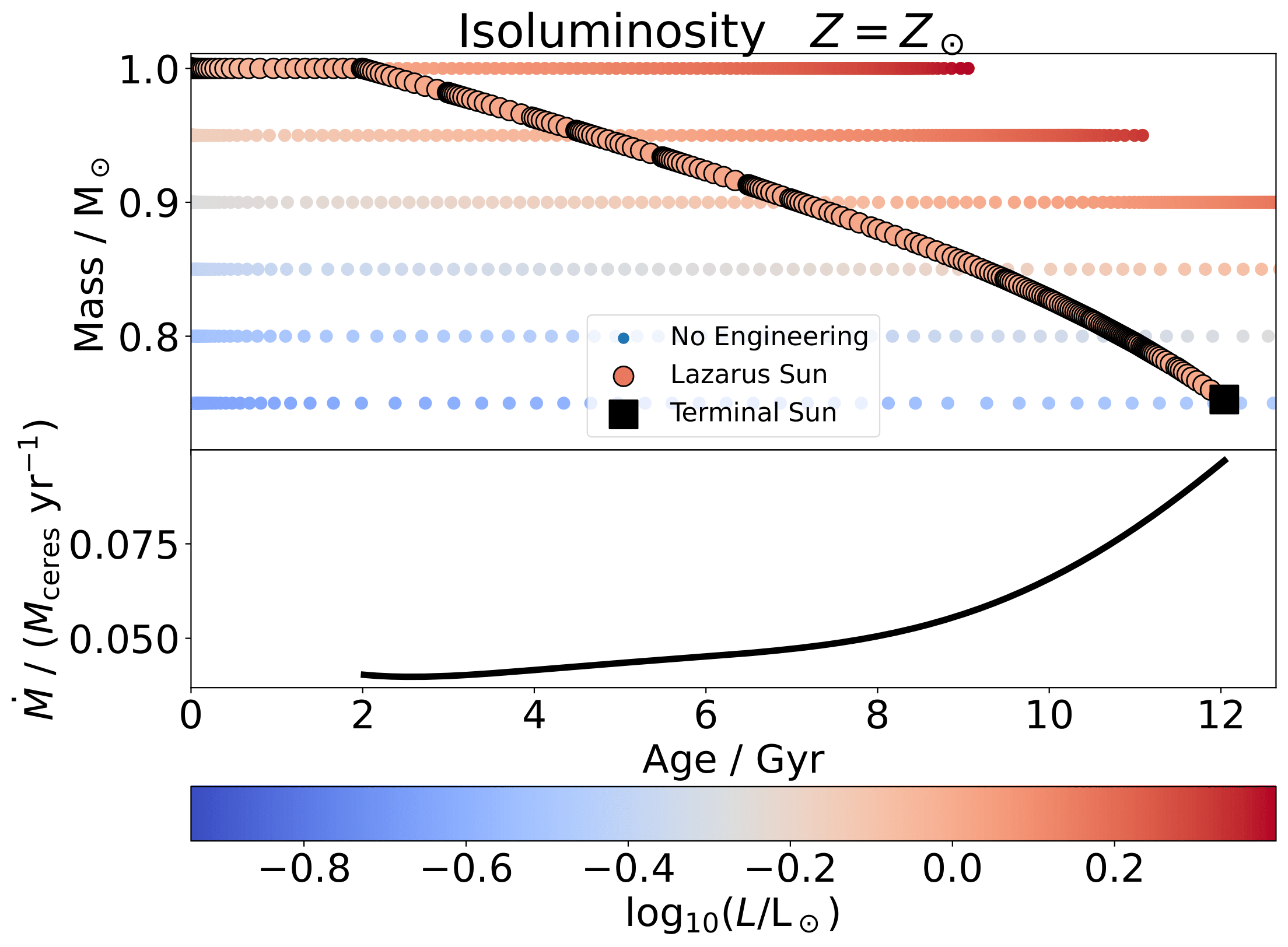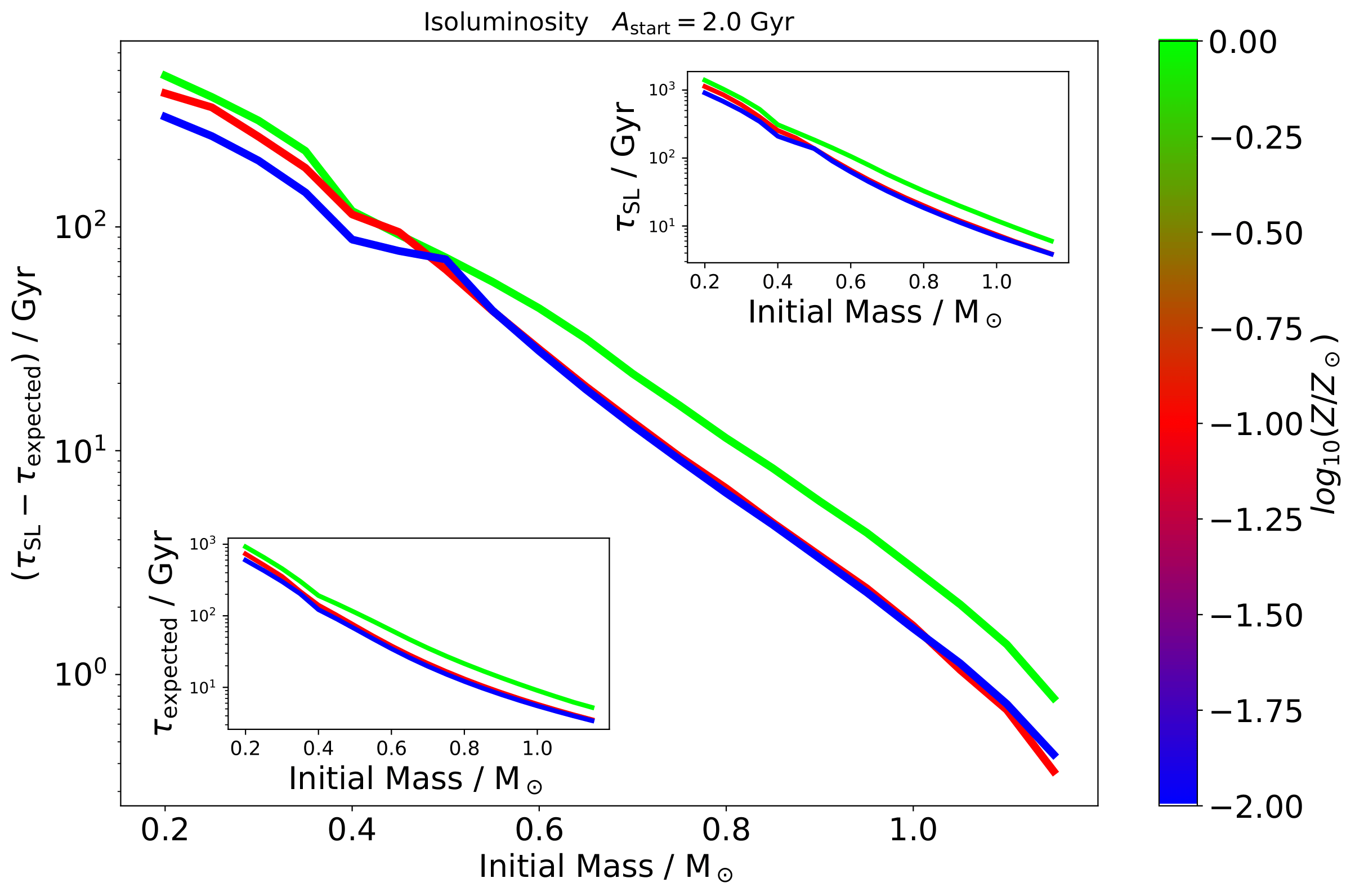Stars gradually brighten and expand with age, eventually destroying potentially habitable worlds. This could be avoided via "Star-lifting", which is the process of gradually removing mass from the star, reducing pressure and the rate of fusion in the core. This can prevent the star from becoming brighter and even extend the life of the star, adding billions of years of habitability to the host's planets. Our first paper used MESA to calculate the star-lifting rate required to keep the flux on all potentially habitable planets constant, for stars ranging from 10% to 120% the size of our Sun. Our follow up project will focus on identify unique detectable features of these engineered stars and searching for them in existing catalogs.
Abstract: The aging and gradual brightening of the Sun will challenge Earth's habitability in the next few billion years. If life exists elsewhere in the Universe, the aging of its host star similarly poses an existential threat. One solution, which we dub a Lazarus star, is for an advanced civilization to remove (or star-lift) mass from their host star at a rate that offsets the increase in luminosity, keeping the flux on the habitable planet(s) constant and extending the lifetime of their star. While this idea has existed since 1985 when it was first proposed by Criswell, numerical investigations of star-lifting have been lacking. Here, we use the stellar evolution code MESA to find mass vs. age and dM/dt vs. age relations which would hold the flux on surrounding planets constant. We explore initial masses ranging from 0.2M⊙ to 1.2M⊙. For most stars with a mass initially below about 0.4M⊙, we find that star-lifting increases their main-sequence lifetimes up to 500 Gyr until they approach the hydrogen burning limit and star-lifting is no longer possible. For more massive stars, star-lifting increase main-sequence lifetimes by 1 Gyr to 100 Gyr, though they still enter the red-giant phase. For example, a Sun-like star has a main-sequence lifetime which can be increased by up to 3 Gyr. This requires a mass loss rate of about 0.05 Mceres per year. We compare star-lifting to other survival strategies and briefly discuss methods for detecting these engineered stars.

